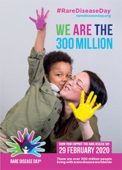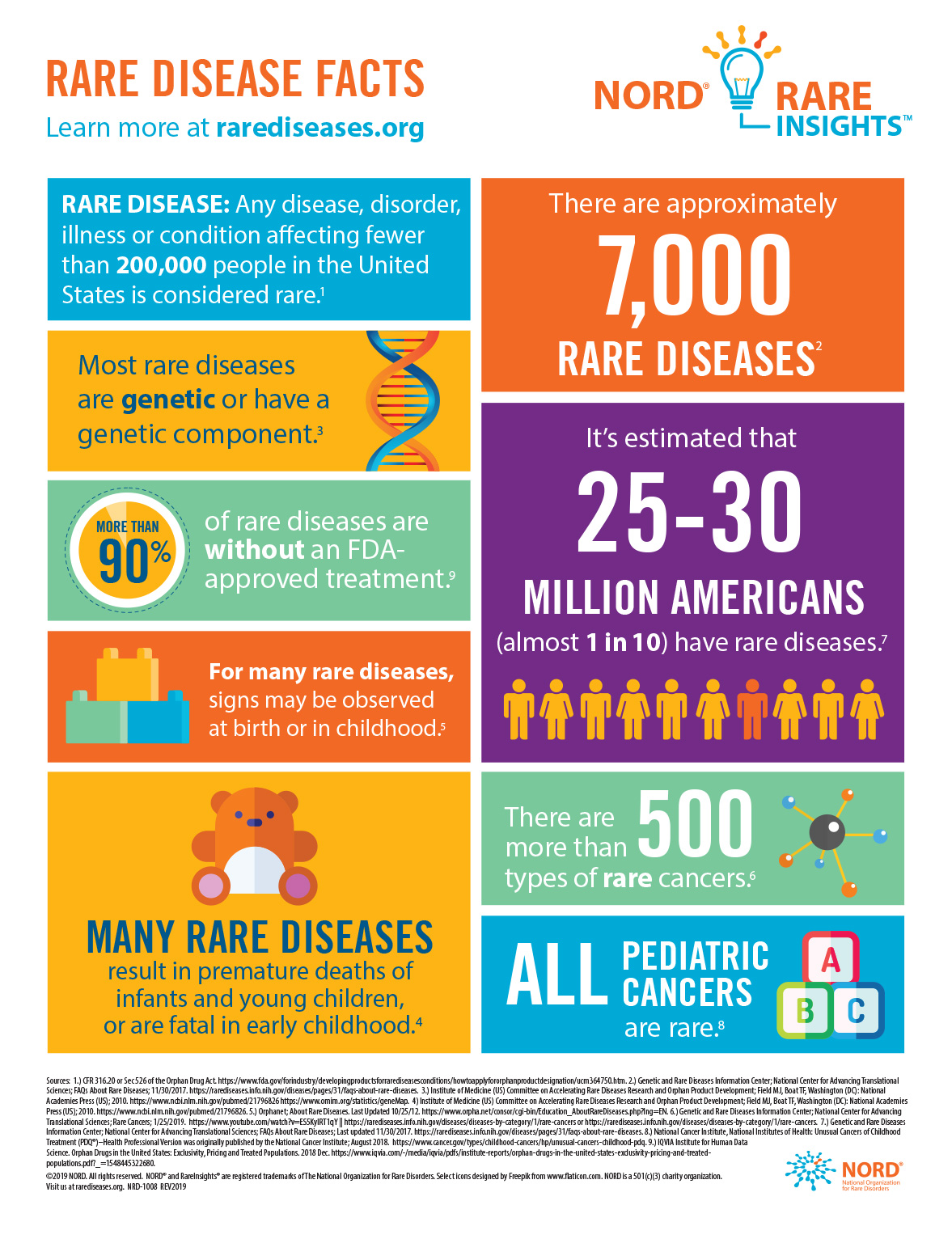
“Rare is many worldwide…Rare is strong every day…Rare is proud everywhere.”
 The key messages for this year’s “Rare Disease Day” emphasize that those with rare diseases collectively are many, strong, and proud. “We are the 300 million,” is a rallying cry for those with rare diseases, highlighting the fact that while the diseases may be individually rare, they affect many millions of people. Empowerment remains an important theme for Rare Disease Day, encouraging patients, caregivers, and other stakeholders to engage and not just raise awareness, but push actionable goals to increase access to more treatments. Erasing the stigma of many rare diseases, which often left sufferers feeling alone and isolated, continues to be a key goal as well – reminding the world that rare disease patients are strong and proud.
The key messages for this year’s “Rare Disease Day” emphasize that those with rare diseases collectively are many, strong, and proud. “We are the 300 million,” is a rallying cry for those with rare diseases, highlighting the fact that while the diseases may be individually rare, they affect many millions of people. Empowerment remains an important theme for Rare Disease Day, encouraging patients, caregivers, and other stakeholders to engage and not just raise awareness, but push actionable goals to increase access to more treatments. Erasing the stigma of many rare diseases, which often left sufferers feeling alone and isolated, continues to be a key goal as well – reminding the world that rare disease patients are strong and proud.

Rare Disease Day is a bit younger than its 20-year-old cancer counterpart
Twelve years ago, the European Organisation for Rare Diseases established February 29th as Rare Disease Day, honoring the 25th anniversary of the Orphan Drug Act in the US by selecting a “rare” day on the calendar to raise awareness about these conditions. It is now held on the last day of February each year. The celebration went global the next year, when the National Organization for Rare Disorders (NORD) mobilized 200 rare disease patient advocacy organizations in the US and were joined by organizations in Latin America, Australia, China, and Taiwan to organize activities to promote the day, leading to an expansion of awareness, programs, legislation, and other efforts in support of rare diseases.
Interestingly, in 1983, when the Orphan Drug Act was enacted, there was some debate about how to define a rare disease and what people may not know is that, originally, the definition was linked to commercial viability as a reflection of incidence, not just on incidence alone. But just a year later, the definition was amended to reflect dual definitions – an incidence-based threshold and a commercial viability threshold for those diseases surpassing the incidence threshold.
“A rare disease is one that affects “less than 200,000 persons in the United States” OR a disease that affects “more than 200,000 persons, but for whom there is no reasonable expectation that the cost of developing and making available in the United States a drug for such disease or condition will be recovered from the sale in the United States.”
—Amended definition of “rare disease” in US Orphan Drug Act of 1983 (1984 amended)
Today, there are over 7,000 identified rare diseases, affecting millions of patients, caregivers, families, friends, and health professionals all over the globe. There are global, regional, and national-level organizations all contributing to efforts like Rare Disease Day and striving to not only raise general awareness about rare diseases, but also to stimulate the development of new treatments and make sure patients have access to those treatments.
Many different types of cancer fall under the umbrella of “rare diseases,” including many pediatric cancers. As researchers, the sheer rarity of some of these conditions makes engagement difficult. Simply finding patients who are willing to participate and/or healthcare professionals who see a sufficient critical mass of such patients to fully inform research can be challenging to say the least. I remember traveling across multiple countries on a project exploring neuroendocrine tumors where incidence levels in practices averaged one or two patients annually. As a result, we conducted just a handful of qualitative interviews in each market.
However, the spike in general awareness of rare disease driven by such vehicles as NORD, various patient-centered advocacy groups, and many other government and non-governmental organizations have opened the informational floodgates. The result, for many rare diseases, is a proactive, connected, and informed patient/caregiver population. Anyone who has conducted research on conditions such as ALS or hemophilia recognizes the unique characteristics of these populations almost instantly. In fact, many patients/caregivers have confided in me over the years that they feel they know more about their disease than do some (or all) of the healthcare professionals with whom they interact.
We’ve come a long way…but the rare disease journey is still ongoing
No one would argue that we aren’t light years ahead of where we were in rare diseases even compared to just 10 years ago.
- Awareness of rare diseases is at an all-time high
- Legislative aids and commercial incentives have driven increased investment in the rare disease sector
- Technological advances have driven improvement in diagnostics and treatments
- Revolutionary pharmacological breakthroughs in targeted immunotherapies have led to new treatment opportunities
- Explosion of social media allows for networking and support among these smaller populations, providing a sense of “connectedness” not possible before
Of course, identification, exploration, and investigation of rare diseases is an ongoing effort. Identification and acknowledgement go a long way, especially psychologically, but without treatment options to pair with it, the unmet needs continue. However, we should also realize that there is still much to be done. Challenges remain for the future:
- We’re identifying new rare diseases all the time
- Awareness and knowledge of rare diseases among healthcare professionals is highly variable
- Many rare diseases still lack viable or truly impactful treatments
- The rarity of these conditions means there are inherent challenges in finding sufficient numbers of patients for traditional trials and testing
- Costs of drugs for rare diseases can be astronomical, creating barriers to access
Awareness and engagement can improve lives
Events such as Rare Disease Day promote greater awareness and engagement aimed at improving the lives of many patients. At Escalent, we take pride in our research efforts in this complex field, and we bring our passion and deeply personal curiosity to every engagement. Please join us in celebrating Rare Disease Day—take a moment to help spread the word and support patients all over the world.
“Rare is many worldwide…Rare is strong every day…Rare is proud everywhere.” For more information on how you can participate, visit https://www.rarediseaseday.org/







